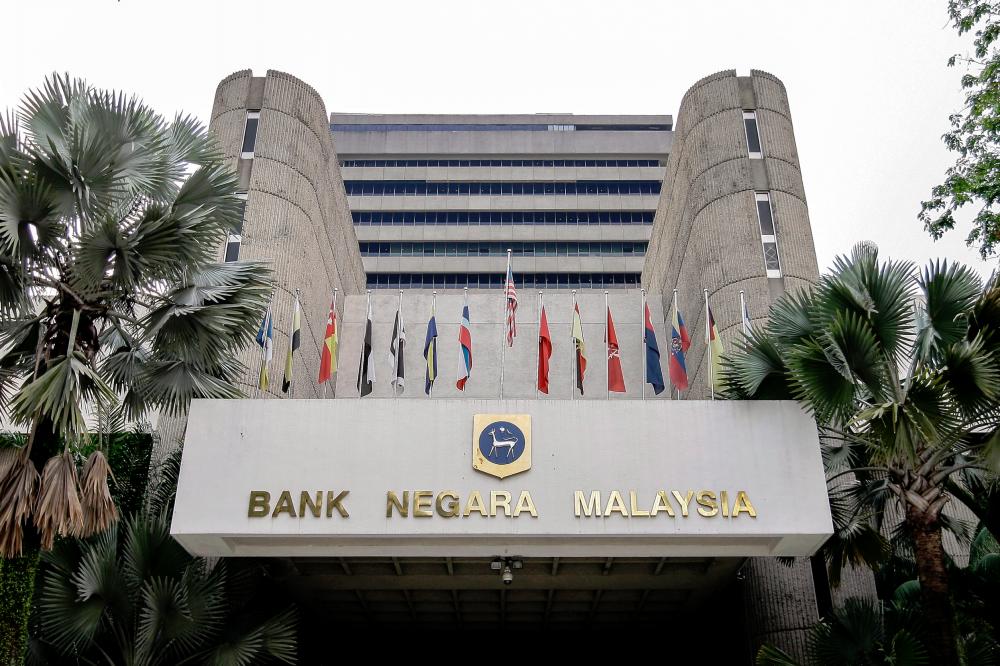PETALING JAYA: Bank Negara Malaysia (BNM) is in no rush to cut the Overnight Policy Rate (OPR) and is unlikely to do so this week, economists say, given that Malaysia’s economy is still sound, and as the weakening of the ringgit is seen to be in line with regional currencies.
Hong Leong Investment Bank economist Felicia Ling opined that BNM will tilt towards a more dovish tone at its Monetary Policy Committee meeting on Thursday, projecting the next OPR cut to happen in November and not this month.
This is premised on the fact that the country’s gross domestic product (GDP) numbers were stronger in the second quarter (Q2’19) compared with Q1’19 and that Malaysia is not an inflation-targeting nation.
“Our inflation is relatively constant,” Ling told SunBiz, explaining that this is because of the fuel float pricing system.
Her view ties in with that of many other economists, which foresees BNM likely to cut rates by another 25 basis points (bps) to 2.75% in November 2019. Most economists do not rule out further cuts in the OPR towards the end of the year, as the worsening global growth outlook will weigh on Malaysia’s external trade and dampen economic growth next year.
“Despite the recent synchronised rate reductions by other central banks, we think BNM will be on hold at 3% again in September, as BNM has already made one pre-emptive 25bps cut in May and is likely to wait for the outcome of US Fed rate decision (Sept 17/18), US-China talks, and Malaysia’s budget announcement (Oct 11),” UOB said in its its weekly outlook for this week.
Ling said that the wave of rate cuts by Asian central banks were partly due to increased interest rates in these economies last year, where the cuts served to reverse the tightening stance. In addition, some of these economies are facing a slowdown with Q2’19 GDP growth weaker than in Q1’19, with some being inflation-targeting central banks.
Indonesia has cut rates twice this year – in July and August – to cushion the economy. Slowing inflation allowed the Philippines to cut rates twice by a total of 50bps in May and August to give the economy a lift. Australia cut rates in June and July to a record low of 1% to revive domestic growth and inflation.
“When oil price goes below US$60, there is a risk that inflation will continue to perform below the expectation or target. That’s why some central banks are cutting more (rates) than BNM,” said Ling.
Some economists, however, think there will be no more rate cuts for the rest of 2019. This is based on the single OPR cut in May, which is deemed sufficient to support the economic growth in the US, as well as the stable Malaysian economy, with domestic demand staying solid.
Ling said BNM does not just follow US Federal Open Market Committee’s (FOMC) footsteps in cutting rates, adding that FOMC’s stance may be one of BNM’s considerations but not its main objective.
“The primary objective (of BNM’s monetary policy) is still Malaysia’s growth and inflation. Malaysia’s growth is affected by the external environment so it’s whether the weaker environment will negatively Malaysia’s exports and growth, then there is a connection for BNM to cut the interest rate. But moving in tandem with FOMC, that’s not the primary objective.”
Should FOMC reduce interest rates, typically it would be good for emerging market currencies due to the weakening of US dollar.
Ling said in reality, however, the greenback may not necessarily weaken, instead its strength may continue due to the high risk aversion that the global economy is facing.
“When risk aversion becomes high, investors will flock to safe-haven assets like the US dollar.”
Ling does not see risks for Malaysia if BNM retains the OPR at 3% this time amid the possibility that FOMC may cut rates.














